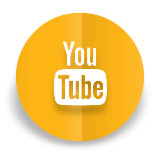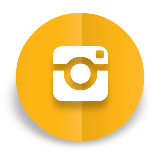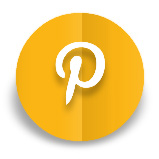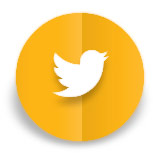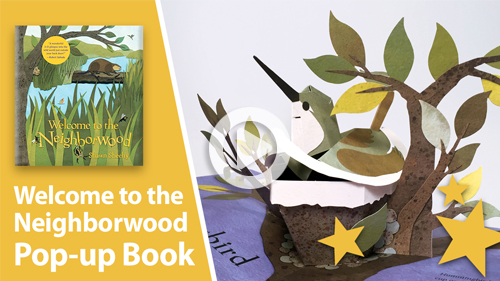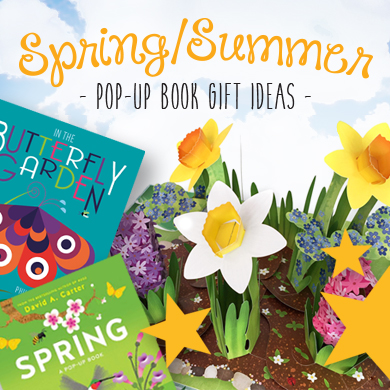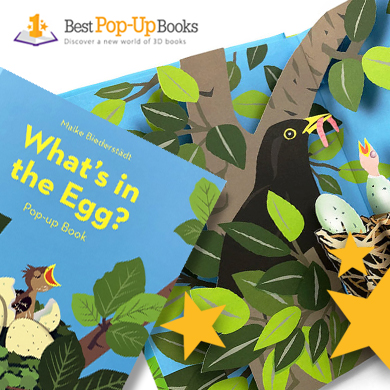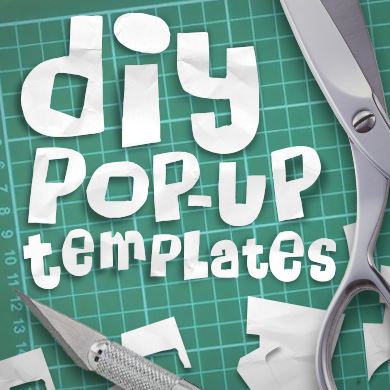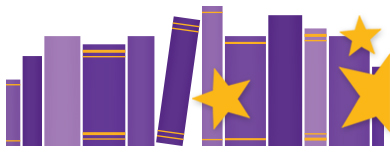Have you ever heard some pop-up related terms come by and you had no idea of the meaning? Then you’ve come to the right page. Below you’ll find a glossary with the most known and common terms related to pop-ups and paper.
Do you find any terms missing or do you have an addition for the list? Let us know and we will make this pop-up dictionary even more complete.
Terms and Definitions: Pop-Up Wiki
CAROUSEL
A carousel pop-up is formed by folding back the front cover and back cover of the pop-up until they reach. These are tied together using rope, tape or Velcro. The pop-up design can now be viewed from a 360 degree angle like a carousel.
DIE-CUTTING
(Also see die-making) When the sheets are printed they are ready for the die-cutting process. Die-cutting means that the pop-up pieces are being cut out of the sheets by using a wooden block and a sharp piece of metal in the shape of the desired design. This custom-made die-mold is being used to cut the pop-up pieces out of the printed sheets when placed onto a printing press. Nowadays it’s more common to cut paper into shapes with the help of laser technology.
DIE-MAKING
Before the die-cutting process may start it is necessary to create a die-mold first. Die cutting means that the pop-up pieces are being cut out of the sheets by using a wooden block and a sharp piece of metal in the shape of the desired design. This piece of metal is called the die. The die is hammered into a custom-made wooden block that has been cut into shape so that the die perfectly fits in. The wooden block with the die sticking out is called the die-mold. Now this die-mold is being used to cut the pieces out of the printed sheets. All this together is called die-making.
FANFOLD
By folding a sheet of paper into strips of equal width an accordion effect will be created. This way of folding paper is called fanfold. Start with a flat sheet of paper, fold the first strip up from the bottom, flip the paper over and fold again making sure that the edges line up at the bottom. Repeat this until there is no more paper left to fold. For example, this technique is used for paper fans and folded cloth napkins.
GATEFOLD
A gatefold is created by folding back both sides of the paper parallel to the center of the paper. In this way, additional panels are created to provide extra pop-ups, text or illustrations. The sides have the half-width of the center panel, and when folded inwardly they meet in the middle without overlapping.
LIFT-THE-FLAP
When a single piece of paper is attached to the base page at one single point, a liftable flap is created. This lift-the-flap technique is used to cover images, text, or pop-ups. When the flap is lifted the image, text, or pop-up will be exposed on the base page.
MOUNTAIN FOLD
When a piece of paper is folded away from you we are speaking of a mountain fold. An unfolded mountain fold gives the idea of looking at a mountain ridge, simply that’s why this type of folding is called a mountain fold.
MANUSCRIPT
Before a pop-up book can be designed and created there first needs to be a story. When the pop-up book story is written, all story pages are merged together to create a manuscript. Next step is showing the manuscript to the publisher who will look closely at it and makes adjustments when necessary. When the publisher approves the next steps can be taken.
METAMORPHOSIS or TRANSFORMATION
A scene in which an image or pop-up transforms into a completely different picture in just one movement. When the reader pulls a tab the image or pop-up changes from looks and shape as a result of multiple paper pieces sliding over and under each other. This transformative effect is also called metamorphosing.
NESTING
When the final artwork is approved by the publisher, the author will send the digital files and the white dummy (also see white dummy) off to the manufacturer. First thing the manufacturer does is called nesting the pop-up book. Nesting means that all the pages and pop-up pieces will be printed on a few large pieces of card stock in order to avoid using lots of paper and to save cost. This nesting process is very time consuming and is therefore not commonly used anymore.
ORIGAMI
Paper engineering and origami are related forms of art which are both based on folded paper. Origami is different from pop-ups because no scissors or glue are needed and origami has to be made with very thin and flexible paper, while pop-ups rely more on glue, cutting, and card stock.
PAPER ENGINEER
A paper engineer is an artist who creates movable paper illustrations using all different kinds of techniques. These techniques include cutting, folding and glueing.
PAPER ENGINEERING
When a paper engineer is working on the design and creation of a pop-up book or paper design his work is called paper engineering.
PEEP SHOW or TUNNEL
When using the peep show or tunnel technique a scene with depth is created that gives the effect of looking inside a tunnel. A series of images are cut and separated from each other with the help of attached side panels. Because of the cut openings in each illustration a see-through is formed. This effect is also called the tunnel technique.
POP-UP
A three-dimensional image is exposed by the opening of a page, pulling a tab, or lifting a flap. This movable paper illustration is called a pop-up.
PULL-TAB
An illustration provided with an extension of paper that can be pulled, pushed or slid. This paper extension is called a pull-tab. When pulled, pushed or slid it causes movement and animation of the pop-up.
SPIRAL
A spiral pop-up is created by cutting a spiral within a circle. Both ends of the spiral shape are attached to the inside side of a spread consisting of two facing pages. With each end attached to one side of the spread a floating spiral arises which opens out above the page level.
SPREAD
When a three-dimensional image pops-up by opening two facing pages we call this a spread pop-up. A spread pop-up comes in impressive heights and sizes, and interacts with both pages using the large surface of the spread.
TRANSFORMATION or METAMORPHOSIS
A scene in which an image or pop-up transforms into a completely different picture in just one movement. When the reader pulls a tab the image or pop-up changes from looks and shape as a result of multiple paper pieces sliding over and under each other. This transformative effect is also called metamorphosing.
TUNNEL or PEEP SHOW
When using the tunnel or peep show technique a scene with depth is created that gives the effect of looking inside a tunnel. A series of images are cut and separated from each other with the help of attached side panels. Because of the cut openings in each illustration a see-through is formed. This effect is also called the peep show technique.
VALLEY FOLD
When a piece of paper is folded towards you we are speaking of a valley fold. An unfolded valley fold gives the idea of looking into a valley, simply that’s why this type of folding is called a valley fold.
VOLVELLES or WHEEL
A volvelle or wheel is a paper construction with rotating elements. Paper circles are placed on top of each other, secured in the center. These circles are able to rotate around it’s center and to slide over and under each other. This also makes it possible to provide information via cut openings in these circles. Early examples of volvelles or wheels can be found in the older astronomy books.
WHEEL or VOLVELLES
A wheel or volvelle is a paper construction with rotating elements. Paper circles are placed on top of each other, secured in the center. These circles are able to rotate around it’s center and to slide over and under each other. This also makes it possible to provide information via cut openings in these circles. Early examples of volvelles or wheels can be found in the older astronomy books.
WHITE DUMMY
To keep the publisher informed about the activities that are going on, an example copy of the pop-up book is being made. Just one copy will be cut, fold, glued and assembled for the publisher to see what the pop-up book is going to look like. Because only plain white paper is used, this example copy is called a white dummy. Sometimes pencil sketches are added to give the pop-ups a bit more detail.

